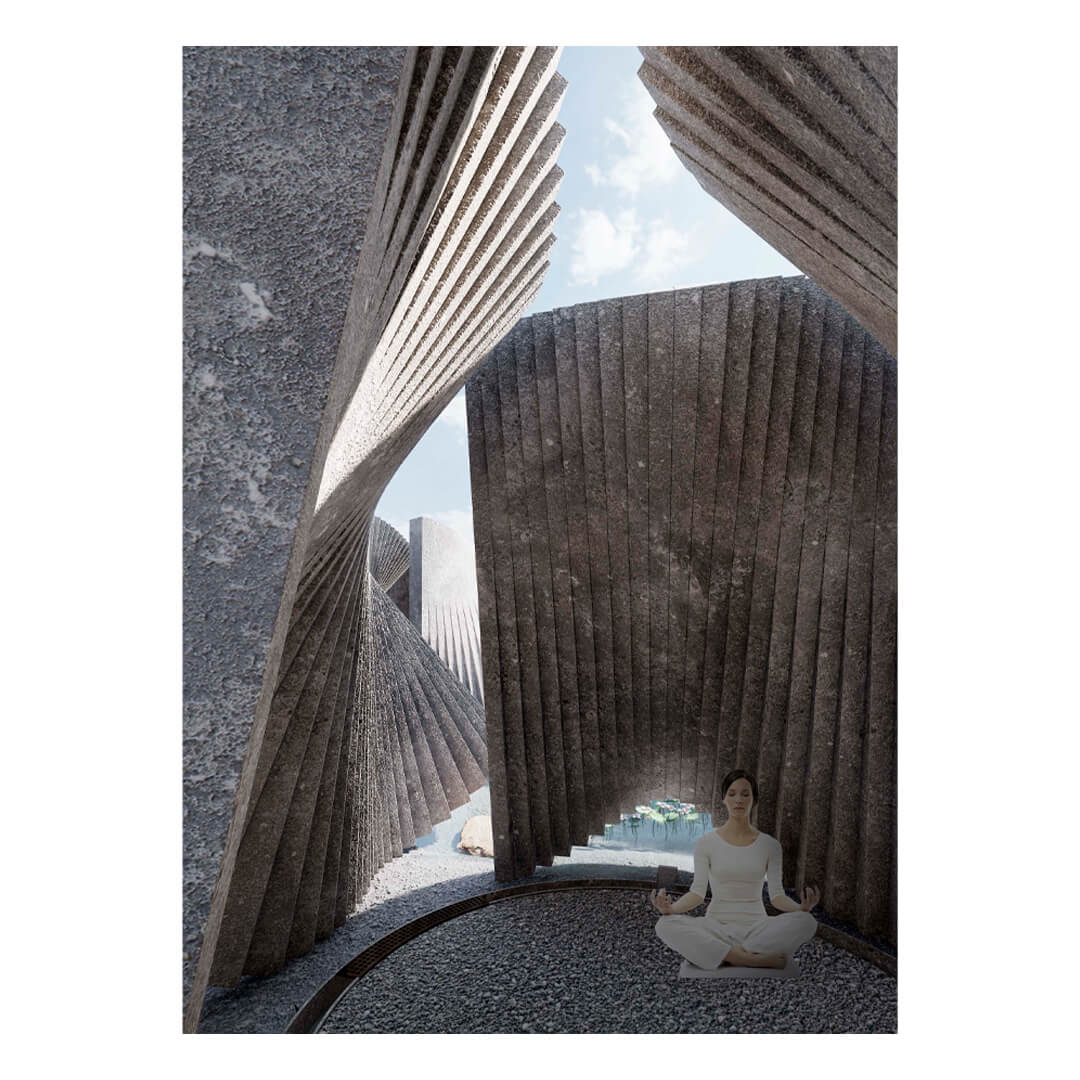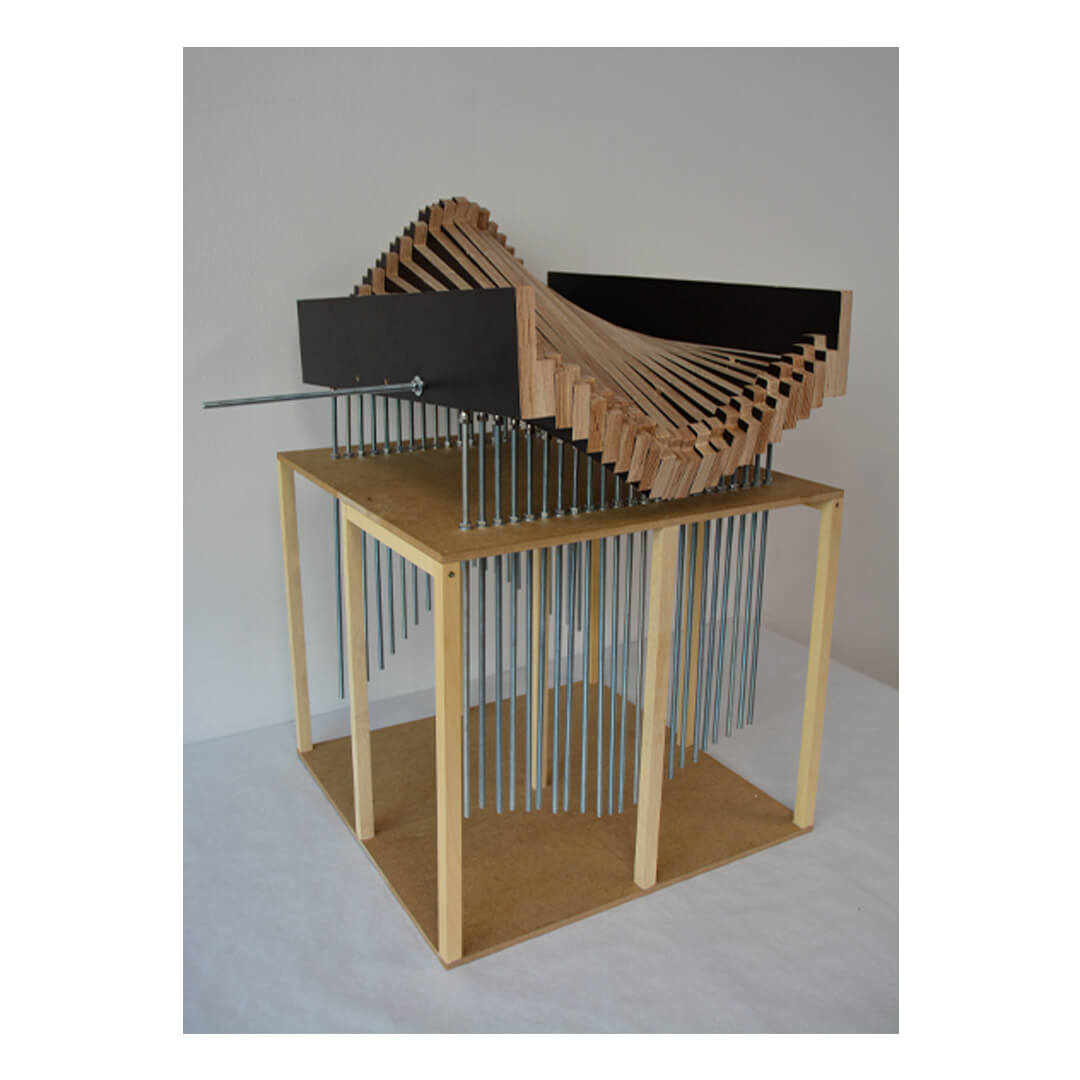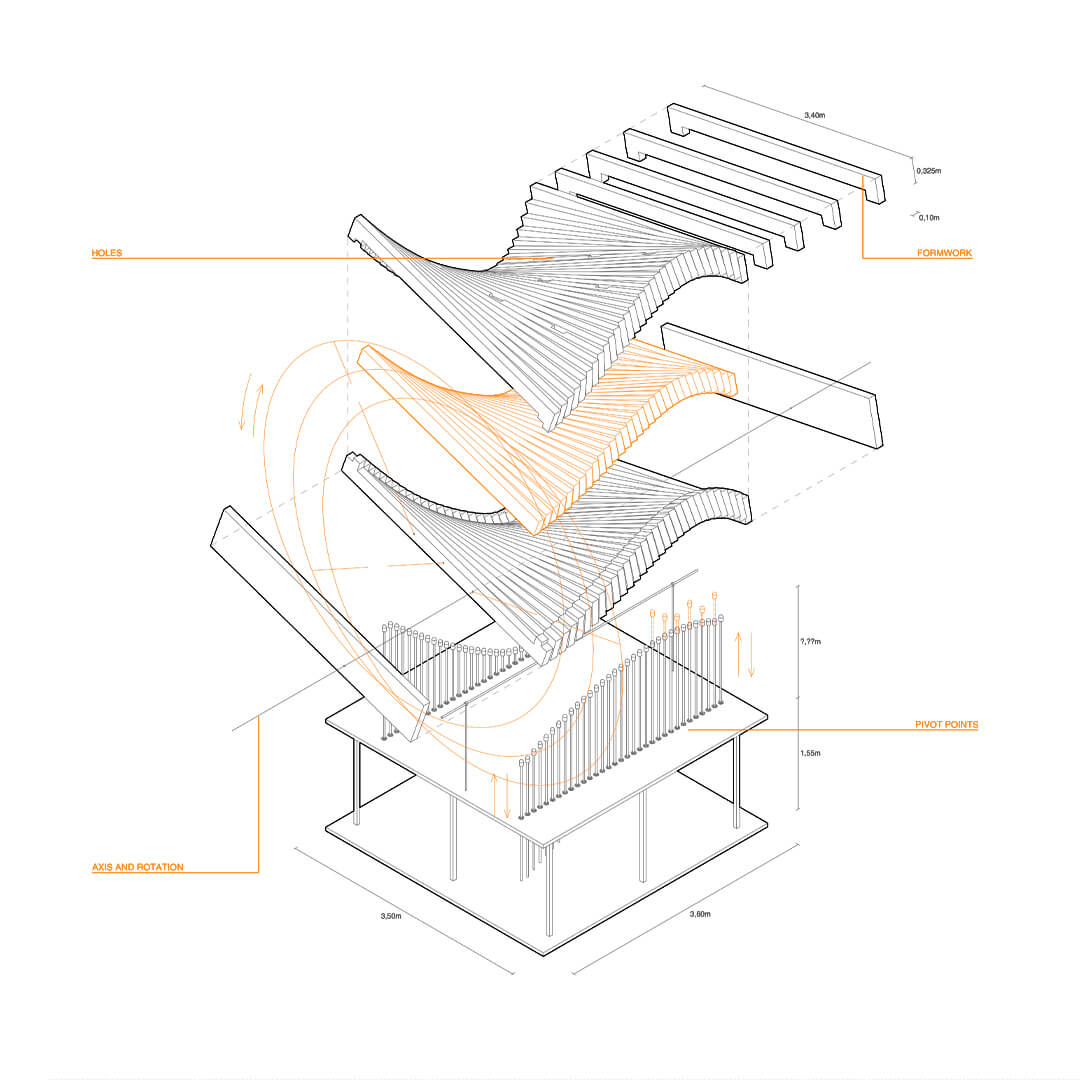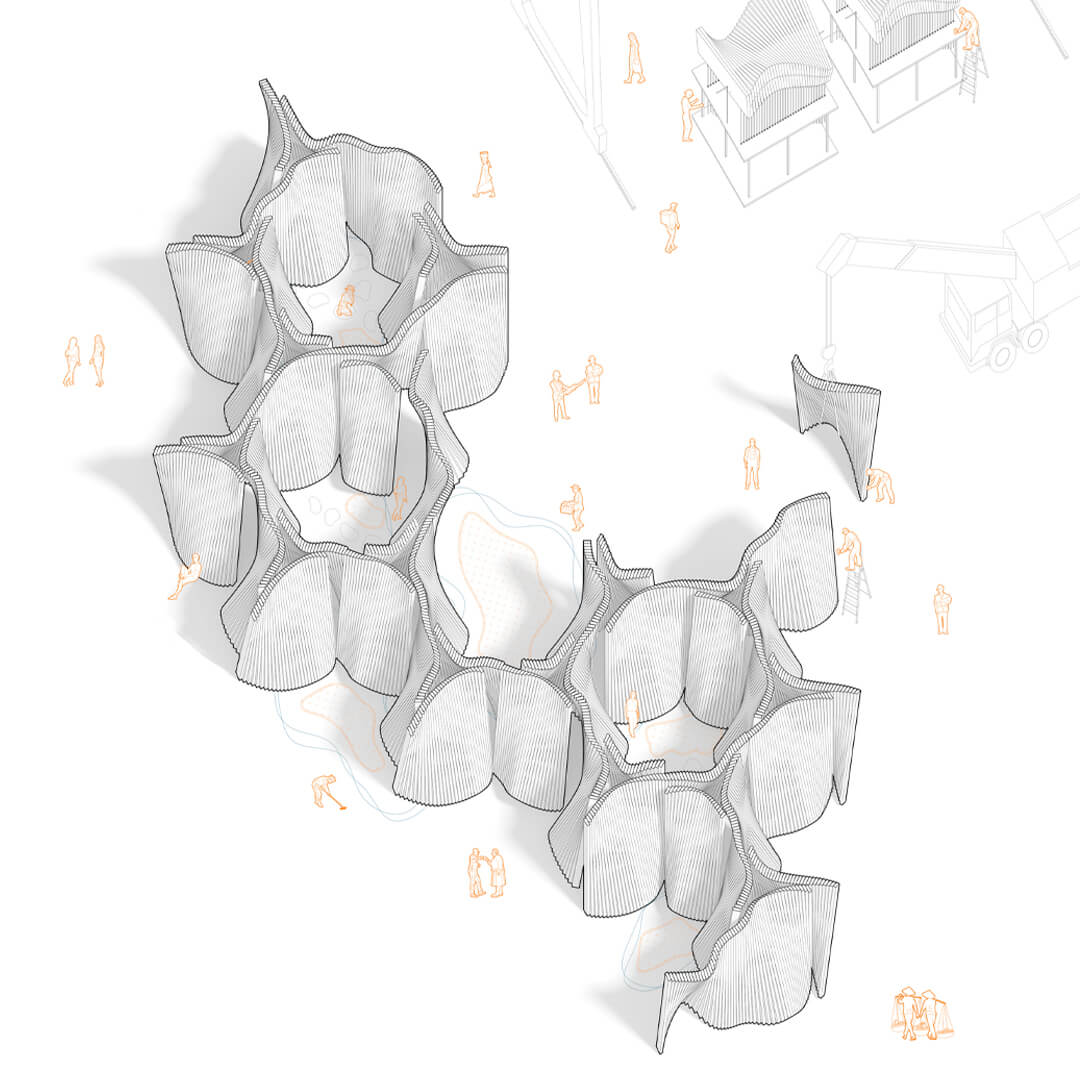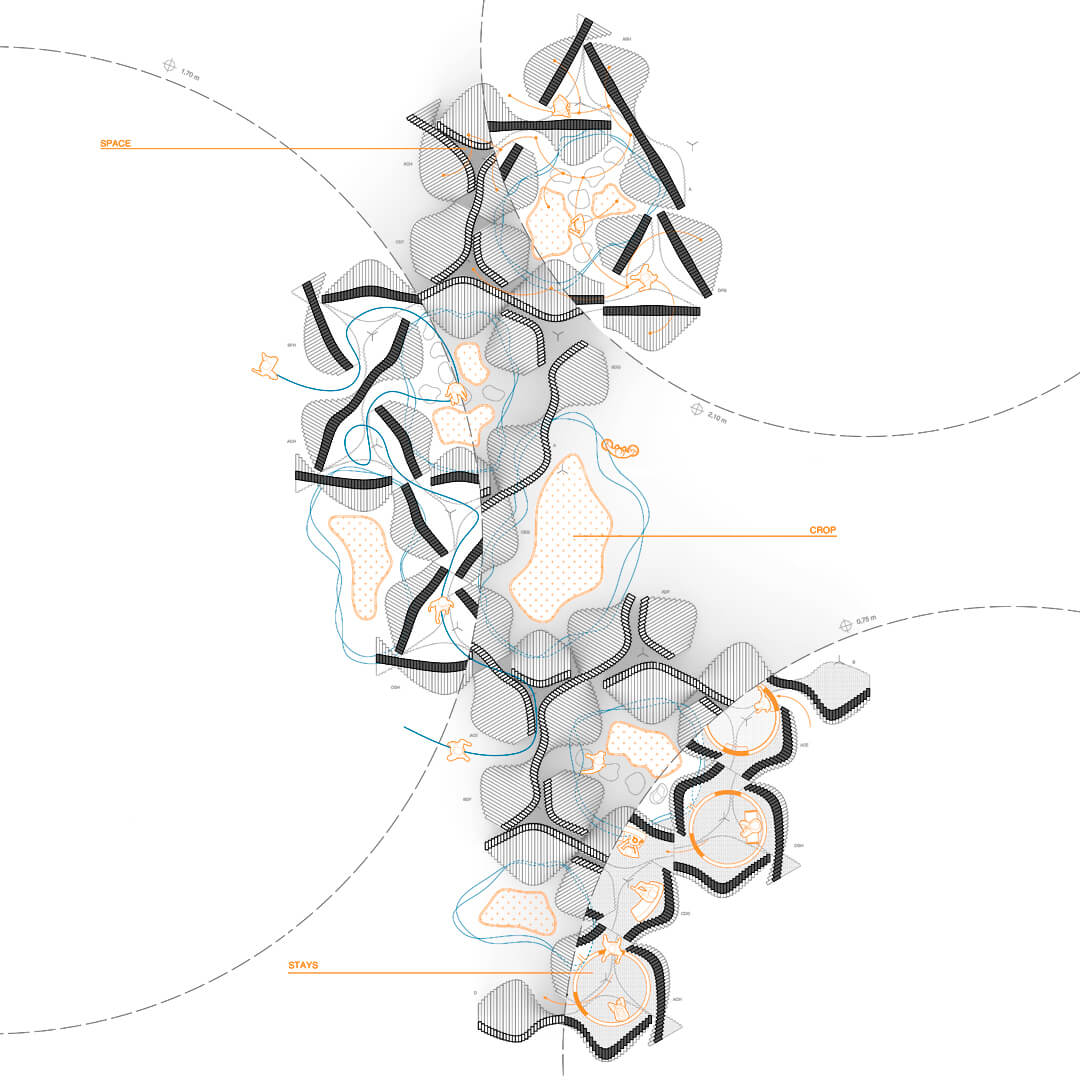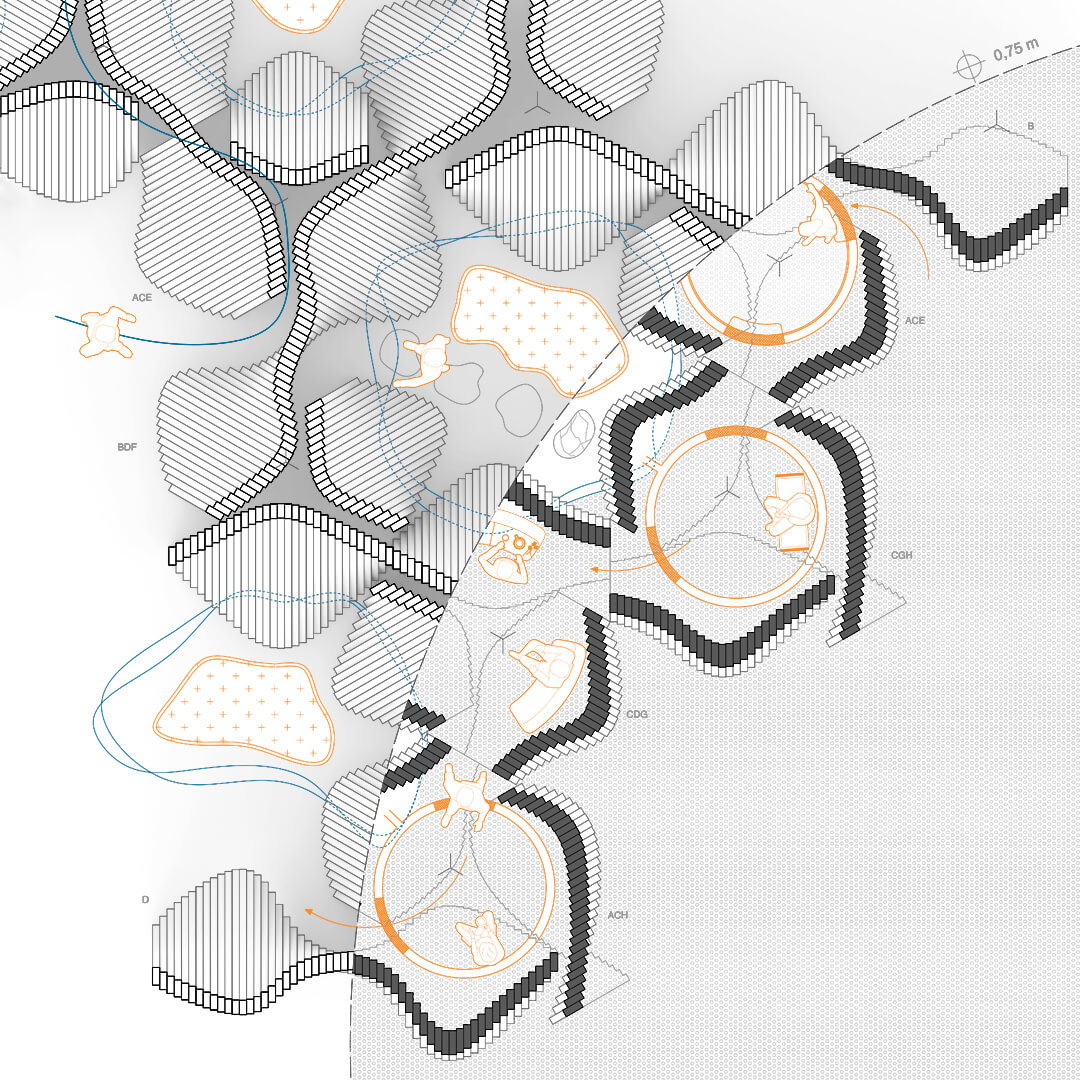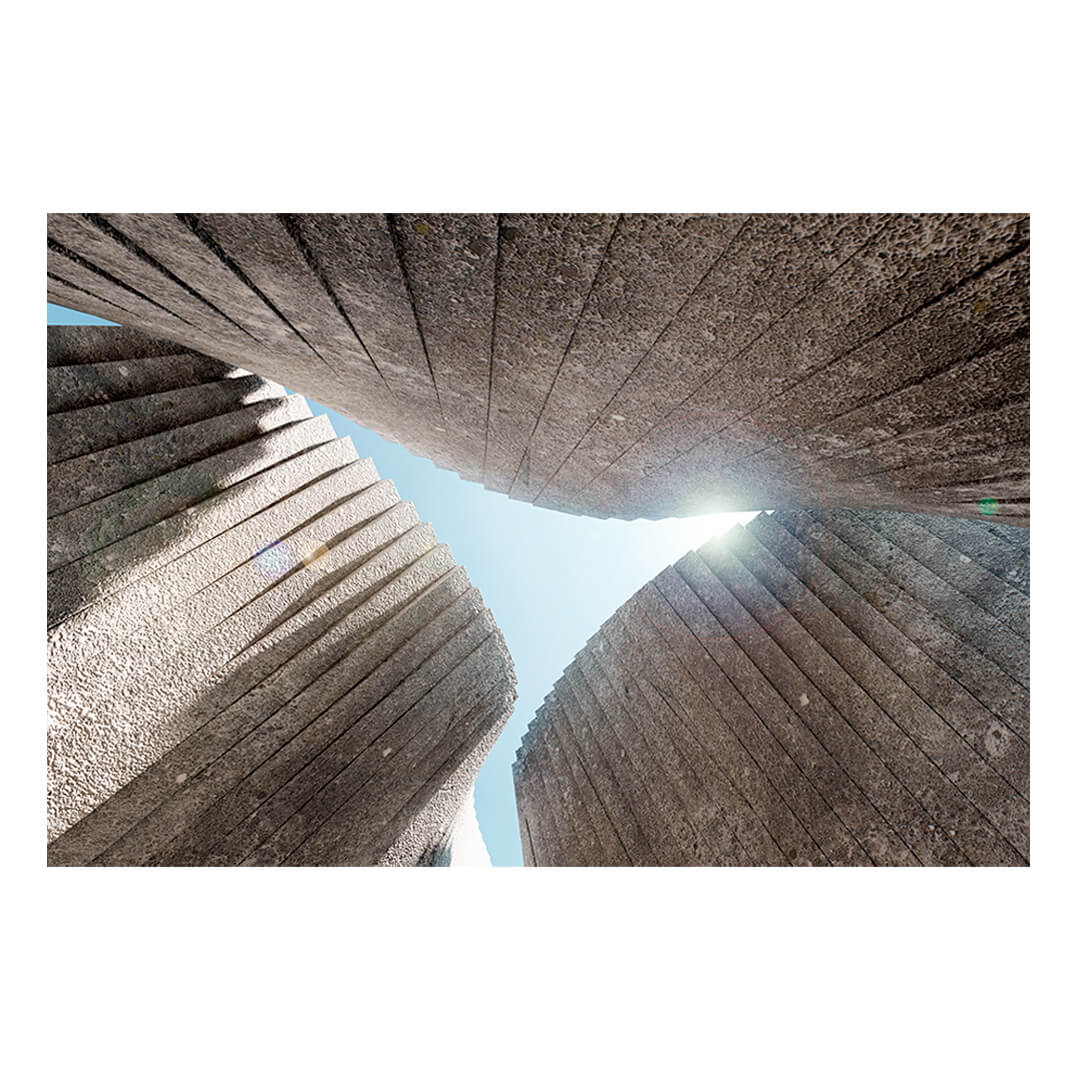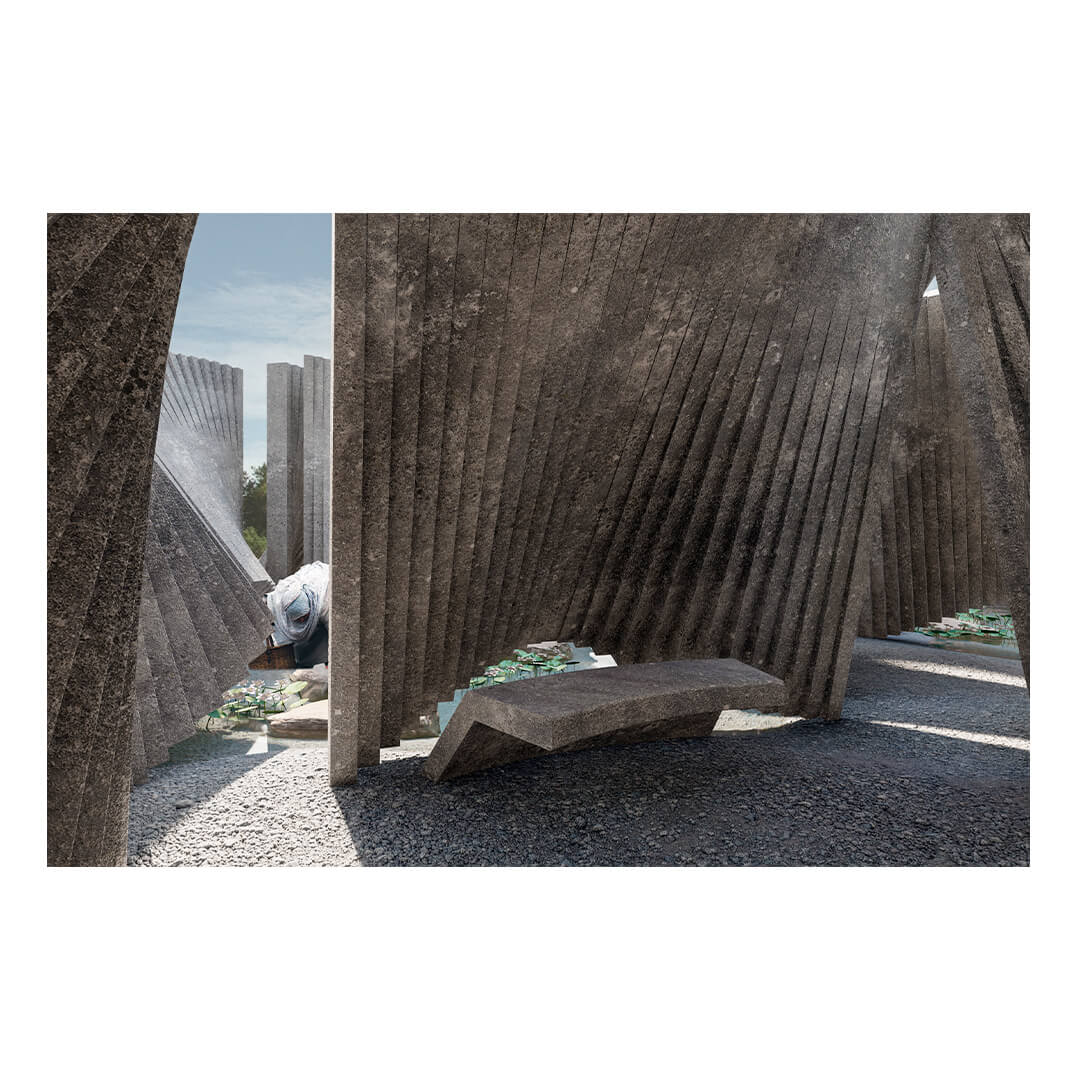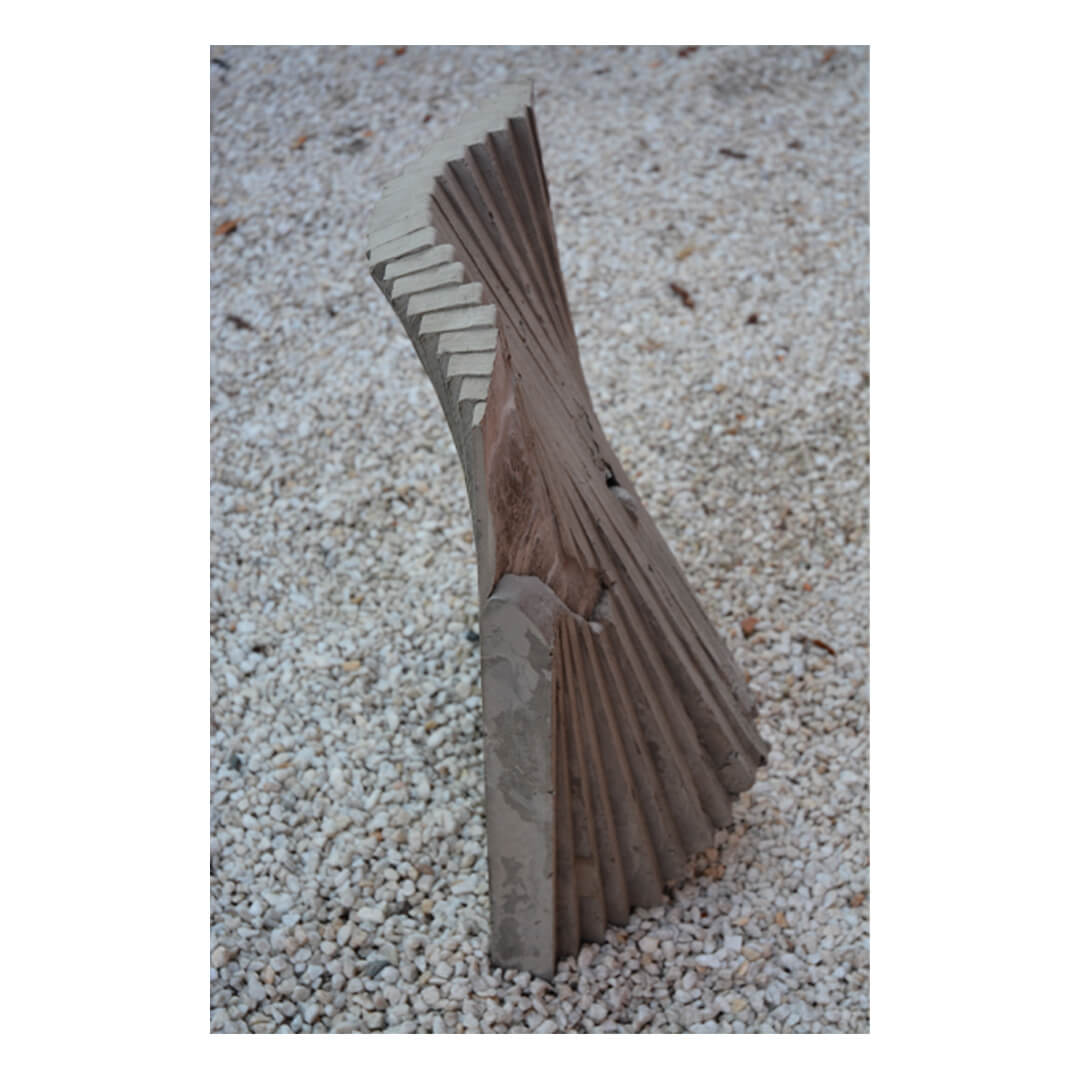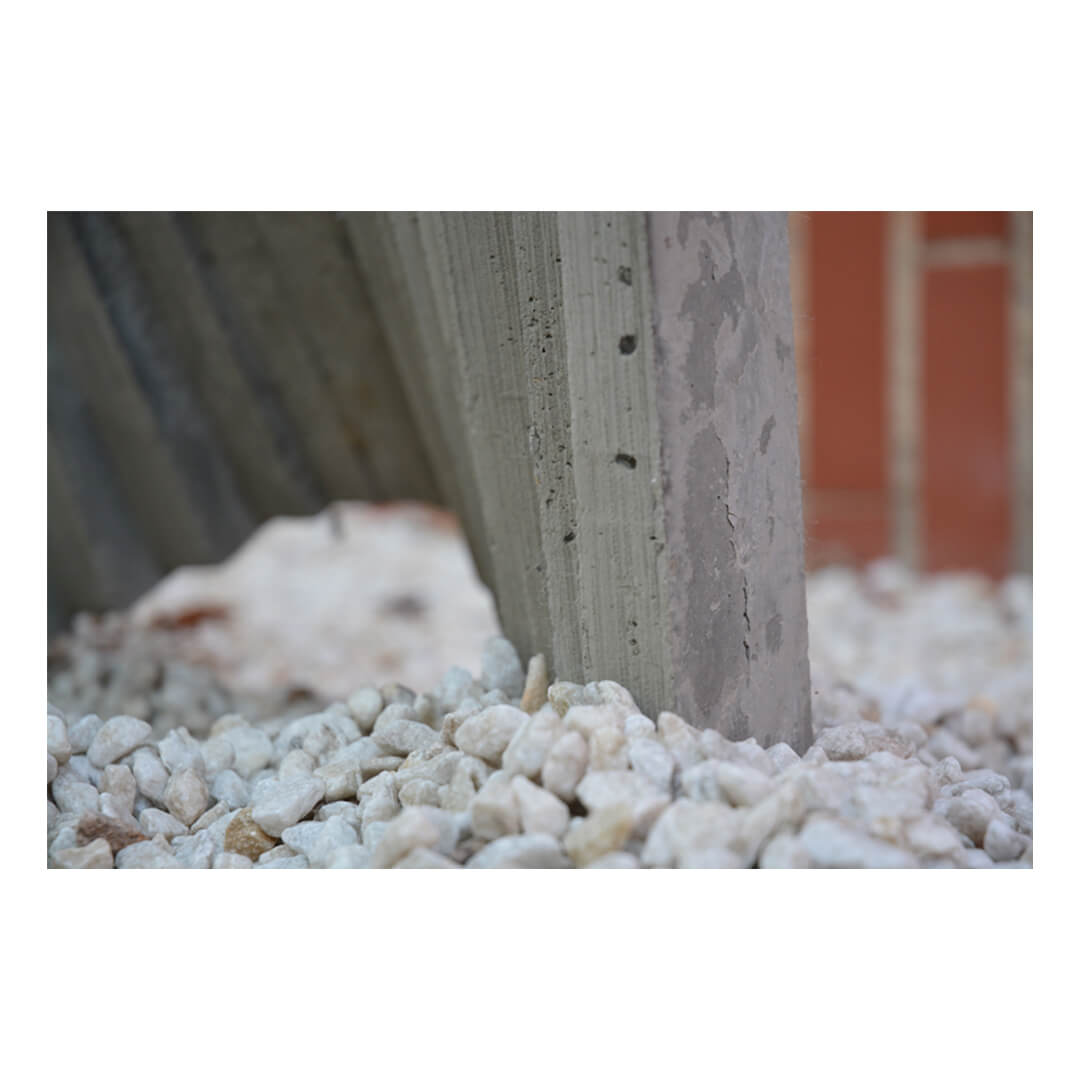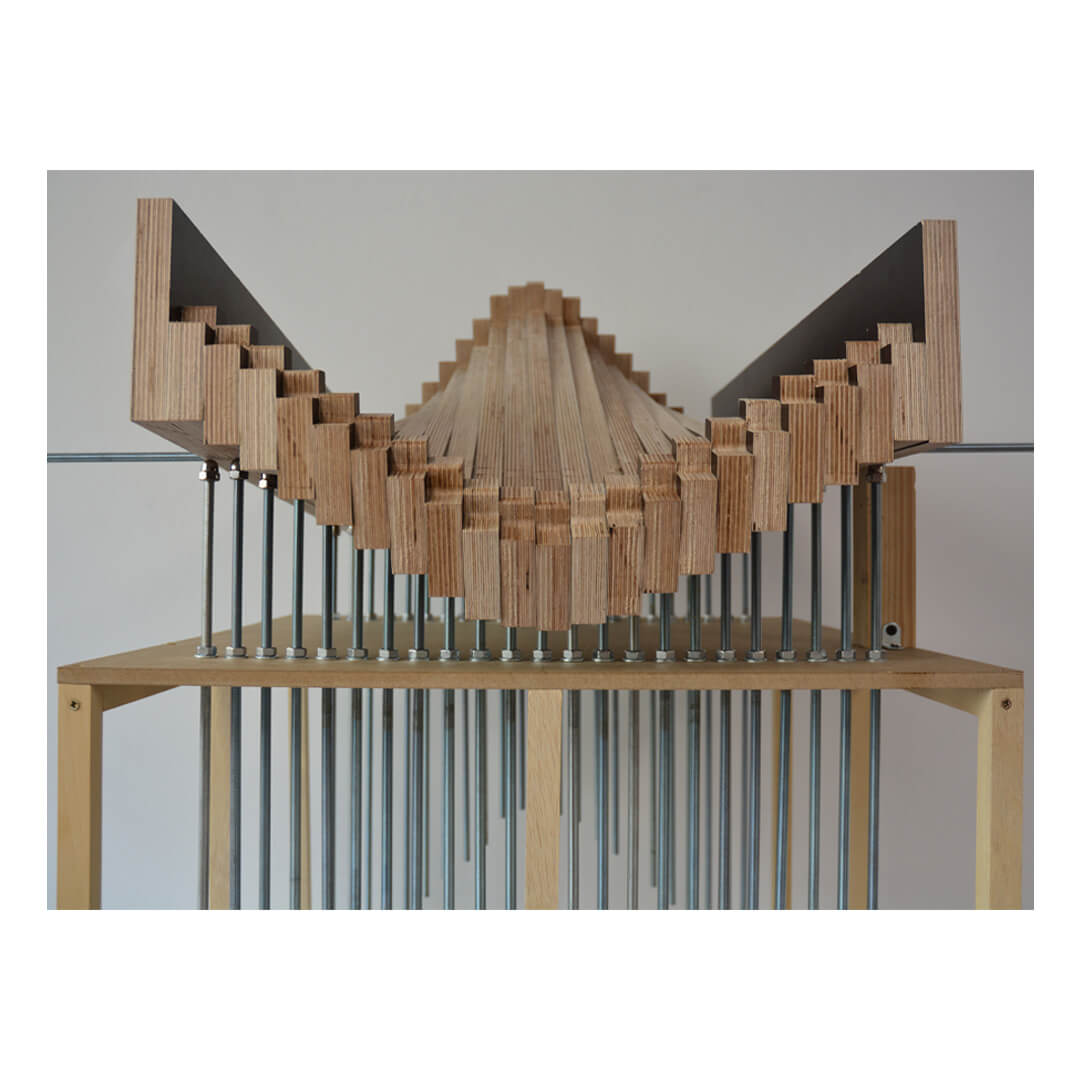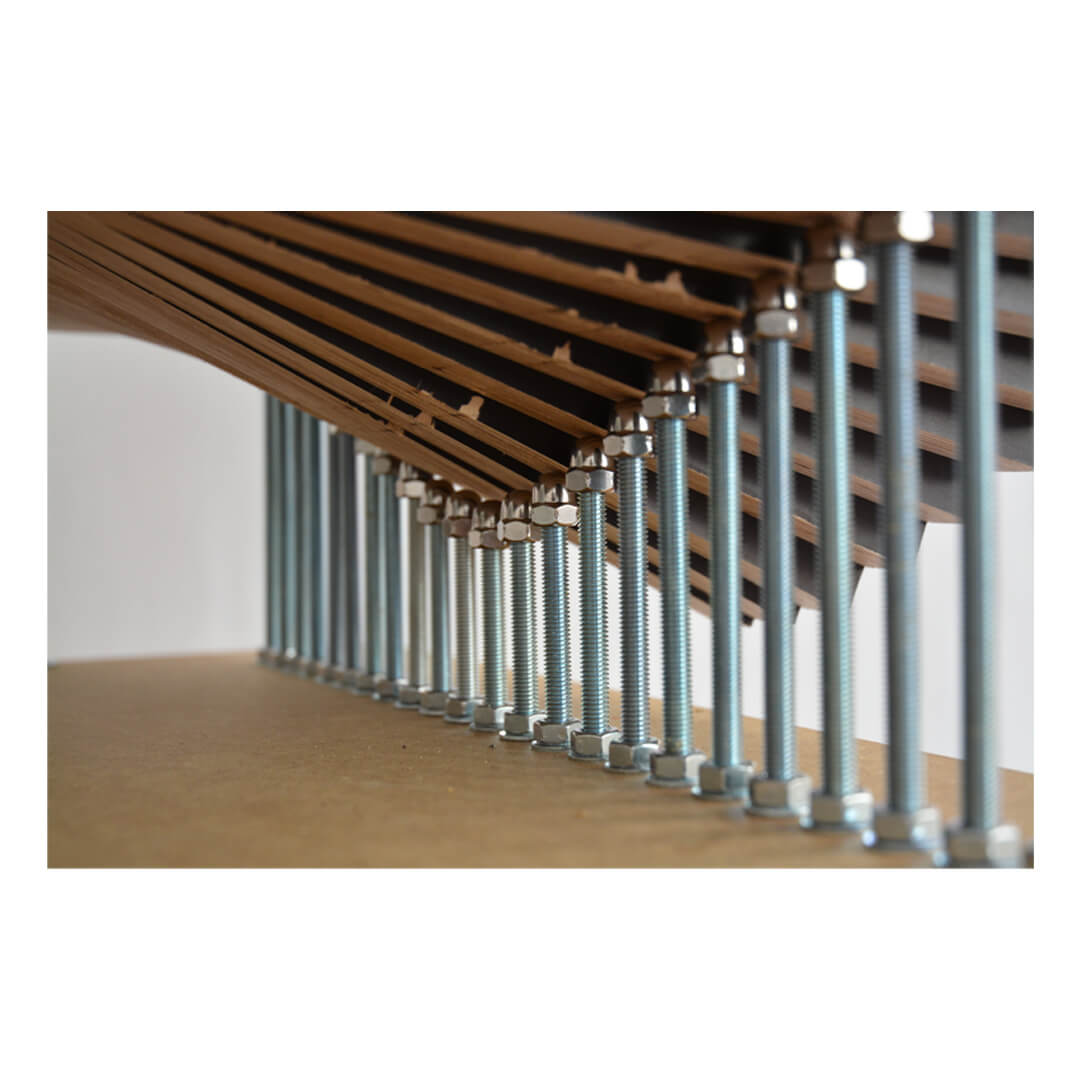Marta Balea+David Cuadrada+Pol Garcia
By studying the way ruled surfaces are made, we came up with a formwork made of wood sections that would allow us to construct a finite number of concrete pieces to create a space.
Inside the place we are capable to achieve a series of comfort conditions, thanks to the properties of the concrete itself and the water stations that we have in certain areas. This place will be located in the surroundings of the Ebro Delta, providing a relaxing and peaceful space where people would feel like disconnecting from the outside world. The program will allow the people that come in here to be able to perform varied activities like meditate, yoga and relax. Through the entire tour people will find different zones that the temperature difference, the water sound, lights and shadows will help them disconnect. To enhance the experience, tea ceremony will be held as part of the meditation process. The platform will also contain different zones filled with water recollected from the rain. In these aquatic zones various types of lotus flower are going to be cultivated. The lotus flowers will have two purposes, it will be used for its properties to purify the water and make it potable and also to make tea from the petals and roots.
Holes: To prevent the concrete aggregates from remaining in the lower part, we decided to place the formwork in a horizontal position. This caused us the inconvenience that we were left without spaces to pour the concrete. So we decided to make a series of holes at different points in the formwork in the thickness of the sections, allowing us to pour the mixture over the top.
Formwork: We decided to use wood to create our formwork, because of the ease it gives us to create the exact cuts we need, with a certain thickness (10 cm). For a correct stripping, we decided to divide each of the sections into two parts, in order to separate them and extract the piece of concrete from the interior without major complications.
Axis and Rotation: Based on our idea of creating an adaptable formwork, we decided to place a rotation axis using a bar that crosses all the sections at the same point, from which all the pieces can rotate, adapting to the shape we want. We went a step further and placed two more rotation axis, one symmetrical in the piece and the other one in the centre of it, allowing us to create even more variations and forms.
Pivot Points: Once we have our axis of rotation in place, we need some element to control the exact coordinate of each section on the z axis. To do this, we use two vertical bars per section, on each side of the axis of rotation, which are fixed to the lower wooden board by means of a female and a washer. This system also allows us, once the piece is in the position we want, to block its rotation.
Space: We’ve approached the design of the project by taking care of how the person would feel like when walking inside and doing different types of activities made exclusively for this kind of environment. We play with light, shadow, temperature, and sound in order to enhance the experience inside the space.
Crop: Through the entire project we find different aquatic areas where the lotus flower is being croped. To complement this entire experience we implement the traditional tea ceremony, with four types of lotus flower: white, pink red and blue. This flower allows us to purify the water so we can drink it and use it for the tea ceremony.
Stays: Each stay we find across the project, we discover a different area to fulfill an activity. This activities are well studied so the person can enjoy a peaceful and relax space, being able to meditate. Inside the room every person will be able to enjoy a cup of lotus tea, breath, relax and for a period of time disconnect from the outside world.
Authors: Marta Balea+David Cuadrada+Pol Garcia.
Location: Barcelona, Spain.
University: ETSAB-UPC.
Tutors: Carles Sala+Relja Ferusic (LAC).
Year: 2022
